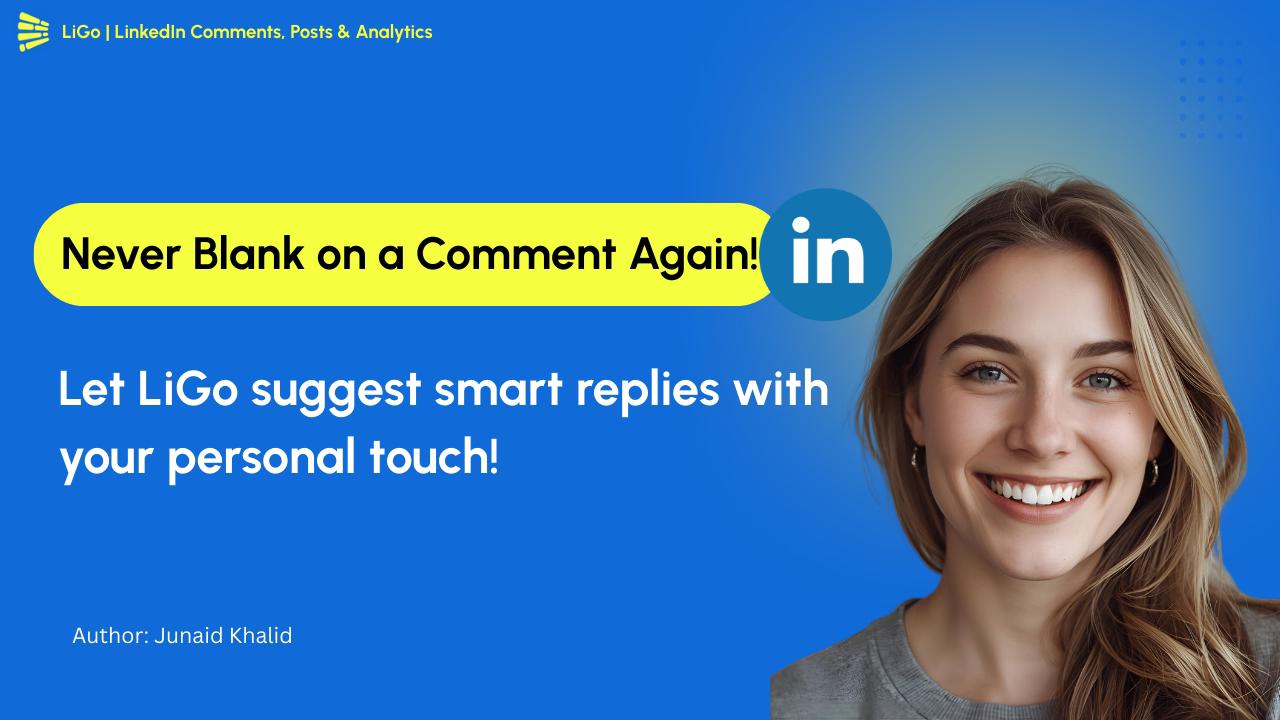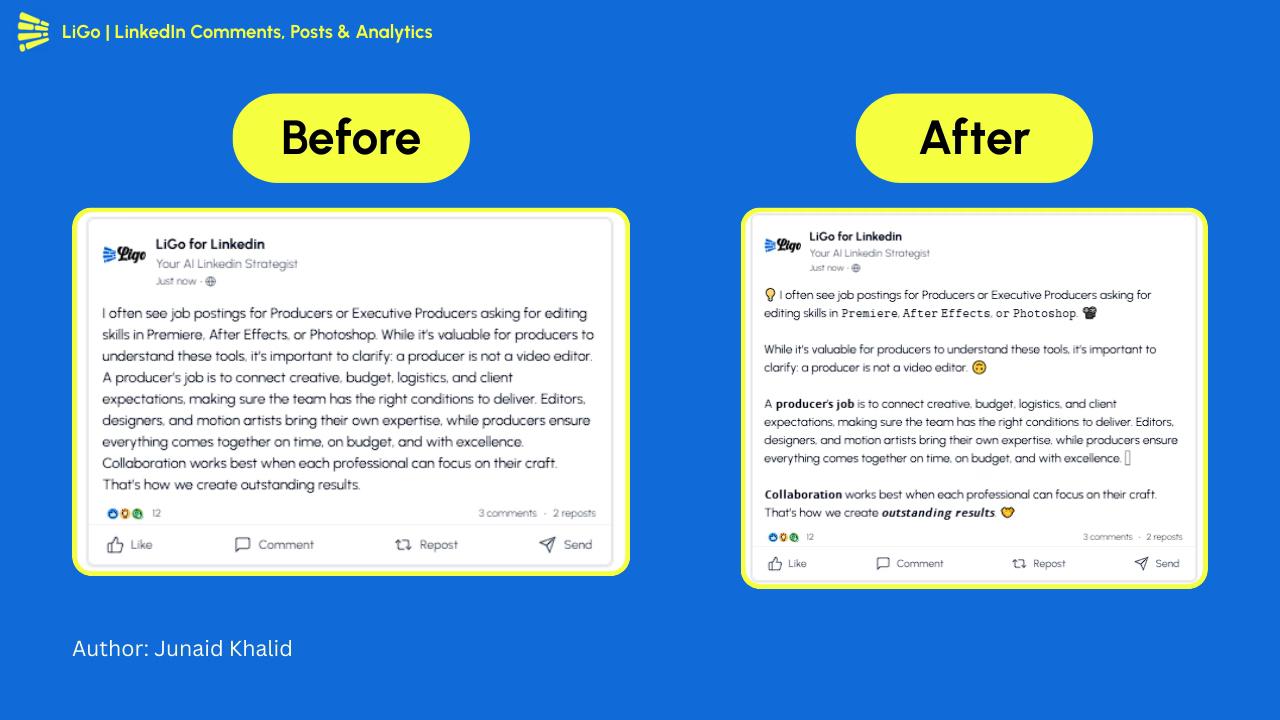LinkedIn polls have emerged as a powerful yet underutilized tool for businesses and professionals. While standard posts might struggle to gain traction, polls offer an easy interaction point that can significantly boost engagement, provide valuable market insights, and increase your content's visibility.
This comprehensive guide covers everything you need to know about creating effective LinkedIn polls in 2025, whether you're using a personal profile or company page.
Why LinkedIn Polls Matter in 2025
LinkedIn polls have evolved from a simple engagement feature to a strategic business tool. Here's why they deserve a place in your content strategy:
Higher Engagement Rates
According to LinkedIn's internal data, polls receive 5x more engagement than standard text posts on average. This engagement boost happens because:
-
They require minimal effort to participate (just a single click)
-
They trigger curiosity about the results
-
They tap into people's desire to share opinions
-
They create a sense of community through participation
Valuable Data Collection
Polls provide direct feedback from your network or target audience on:
-
Market preferences
-
Tendencias de la industria
-
Potential product features
-
Professional pain points
-
Content interests
Algorithm-Friendly Content
LinkedIn's algorithm favors content that generates quick, meaningful interactions. Polls trigger these interactions immediately, which can significantly expand your content's reach.
How to Create a LinkedIn Poll
For Personal Profiles:
-
Click "Start a post" at the top of your LinkedIn homepage
-
Click the "Create a poll" icon (graph icon)
-
Type your question (keep it under 140 characters)
-
Add up to 4 answer options (30 characters each)
-
Set the poll duration (1 day, 3 days, 1 week, or 2 weeks)
-
Add context in the post area above the poll
-
Select who can see your poll
-
Haga clic en "Publicar"
For Company Pages:
-
Navigate to your company page
-
Haz clic en "Iniciar una publicación"
-
Select the "Create a poll" option
-
Enter your question and answer options
-
Set poll duration
-
Add explanatory text
-
Haga clic en "Publicar"
Pro tip for company pages: LinkedIn polls from company pages often perform better than those from personal profiles for gathering objective market research, as they're perceived as more official and less biased.
10 Types of LinkedIn Poll Questions That Drive Engagement
1. Industry Trend Assessment
Ejemplo: "Which technology will have the biggest impact on [your industry] in 2025?"
-
AI and machine learning
-
Blockchain
-
AR/VR
-
Edge computing
Por qué funciona: Positions your company as forward-thinking while gathering valuable market intelligence.
2. Pain Point Identification
Ejemplo: "What's your biggest challenge with [specific business process]?"
-
Finding qualified talent
-
Managing remote teams
-
Maintaining consistent quality
-
Scaling operations
Por qué funciona: Helps you understand audience needs while demonstrating your awareness of industry challenges.
3. Feature/Product Feedback
Ejemplo: "Which feature would you most like us to add to [product/service] next?"
-
Integration with [specific tool]
-
Advanced reporting
-
Mobile functionality
-
Custom templates
Por qué funciona: Provides actionable product development insights while making followers feel involved in your company's evolution.
4. Professional Development
Ejemplo: "Which skill do you believe is most valuable for [profession] in 2025?"
-
Data analysis
-
AI prompting
-
Public speaking
-
Project management
Por qué funciona: Relevant to career-focused LinkedIn users and generates discussion about professional growth.
5. Content Preference
Ejemplo: "Which content format do you find most valuable for professional learning?"
-
In-depth articles
-
Short-form videos
-
Podcast episodes
-
Interactive webinars
Por qué funciona: Helps you plan your content strategy while encouraging followers to reflect on their learning preferences.
6. Opinion/Controversy Polls
Ejemplo: "Is AI-generated content helping or hurting [industry] creativity?"
-
Enhancing creativity
-
Diminishing originality
-
Both equally
-
Neither significantly
Por qué funciona: Taps into current debates and typically generates higher engagement through comments and shares.
7. Work Culture Assessment
Ejemplo: "Which workplace benefit would most influence your decision to join a company?"
-
Flexible hours
-
Remote work options
-
Professional development budget
-
Comprehensive healthcare
Por qué funciona: Provides recruitment insights while positioning your company as employee-focused.
8. Market Prediction
Ejemplo: "How do you expect [specific market trend] to change in the next 6 months?"
-
Significant growth
-
Moderate growth
-
Remain stable
-
Decline
Por qué funciona: Establishes your company as industry-aware while gathering predictive insights from your network.
9. Binary Choice Questions
Ejemplo: "When making B2B purchasing decisions, which matters more to you?"
-
Proven ROI
-
Ease of implementation
-
Quality of support
-
Brand reputation
Por qué funciona: Simple structure encourages participation and often leads to explanations in the comments.
10. Benchmark Questions
Ejemplo: "How often does your team evaluate its tech stack?"
-
Mensual
-
Quarterly
-
Annually
-
Only when problems arise
Por qué funciona: Helps professionals compare their practices to peers while providing you with valuable behavioral data.
Best Practices for LinkedIn Polls That Convert
Optimal Timing for LinkedIn Polls
Post timing:
-
Tuesday through Thursday typically sees the highest poll participation
-
9-10 AM or 1-2 PM in your target audience's primary time zone generally works best
-
Avoid weekends and Monday mornings when engagement is typically lower
Duration setting:
-
For quick pulse checks: 1-3 days
-
For higher participation: 1 week (most commonly used)
-
For maximum reach: 2 weeks (though engagement tends to taper after the first week)
Writing Compelling Poll Questions
-
Be specific and clear
-
Avoid jargon unless your audience is highly technical
-
Use simple language that doesn't require interpretation
-
-
Create balanced options
-
Ensure options don't overlap
-
Cover the full spectrum of possible answers
-
Include a "See results/Other" option when appropriate
-
-
Avoid leading questions
-
"What's your preferred remote work arrangement?" (good)
-
"Don't you agree that hybrid work is better than full remote?" (poor)
-
-
Make options distinct and concise
-
Keep options under 30 characters
-
Use parallel structure in options
-
Maximizing Engagement With Your Poll
-
Add context in the post text
-
Explain why you're asking the question
-
Share your own perspective or experience
-
Include relevant hashtags (3-5 maximum)
-
-
Encourage comments
-
Explicitly ask people to explain their choice in the comments
-
Pose a follow-up question in your poll description
-
-
Tag relevant connections
-
Tag 3-5 connections whose perspective would be valuable
-
Always respect professional boundaries when tagging
-
-
Respond actively
-
Comment on interesting responses
-
Thank people for participating
-
Ask follow-up questions to deepen the conversation
-
How to Use Poll Results Strategically
LinkedIn polls aren't just about engagement-they provide valuable data you can leverage in multiple ways:
1. Content Creation
Use poll results as the foundation for follow-up content:
-
Create an analysis post sharing insights from the results
-
Develop an article expanding on the most popular option
-
Record a video discussing surprising findings
Ejemplo: "Last week, 72% of you said AI prompting was the most valuable skill for marketers in 2025. Based on this insight, we've created a comprehensive guide on developing this skill set. [Link in comments]"
2. Product Development
Incorporate poll feedback into your product roadmap:
-
Prioritize features based on poll preferences
-
Address pain points identified in polls
-
Test messaging around new offerings
Ejemplo: "You spoke, we listened! After 68% of you selected 'Advanced Reporting' as your most-wanted feature, we've fast-tracked its development for our Q2 release."
3. Market Research
Use poll data to inform broader marketing and business strategies:
-
Identify emerging trends
-
Validate business hypotheses
-
Understand audience preferences
-
Gauge market sentiment
Ejemplo: "Our recent poll revealed that 76% of professionals in our network are evaluating their tech stack quarterly rather than annually. This shift toward more frequent assessment is shaping our customer success approach."
4. Building Thought Leadership
Compile poll results over time to establish data-driven industry insights:
-
Track changing preferences
-
Identify emerging trends
-
Compare your audience to broader industry reports
Ejemplo: "After running monthly polls for the past year, we've compiled the data into our '2025 [Industry] Sentiment Report,' tracking how professional opinions have evolved on key topics."
Advanced Poll Strategies for Company Pages
1. Series-Based Polling
Create a recurring poll series that follows a theme:
-
"Monthly Trend Check-in"
-
"Quarterly Industry Pulse"
-
"Technology Adoption Tracker"
This approach builds anticipation and provides comparable data over time.
2. Multi-Channel Amplification
Extend the reach of your LinkedIn polls:
-
Share the poll link in company newsletters
-
Have team members share the poll to their personal networks
-
Cross-promote on other social platforms
-
Include in customer communications when relevant
3. Strategic Follow-Up
After your poll ends:
-
Share the results in a separate post
-
Connect findings to your company's offerings or perspective
-
Reach out to engaged participants individually
-
Convert the conversation into leads when appropriate
Example follow-up post: "The results are in! 64% of you selected 'Finding qualified talent' as your biggest operational challenge. This aligns with what we're hearing from clients, which is why we've developed [Solution]. Here's how we're helping companies overcome this challenge: [Brief explanation]"
4. Employee Advocacy Amplification
Leverage your team to maximize poll reach:
-
Create a company poll notification system for employees
-
Provide suggested sharing text they can use
-
Encourage team members to add their personal take when sharing
-
Recognize employees whose sharing drives significant engagement
5. Controversy With Purpose
Carefully crafted controversial polls can drive exceptional engagement:
-
Choose topics with legitimate professional debate
-
Frame questions neutrally despite touching on controversial topics
-
Maintain a professional, respectful tone in all interactions
-
Be prepared to moderate comments if discussions become heated
Example controversial poll: "With recent tech industry layoffs, which approach do you believe is more ethical?"
-
Quick, large-scale reductions
-
Gradual reductions over time
-
Performance-based only
-
Hiring freezes instead of layoffs
Common LinkedIn Poll Mistakes to Avoid
1. Excessive Self-Promotion
Bad example: "Which of our amazing services would benefit you most?"
Better approach: "Which professional service typically provides the most value to your organization?"
2. Too Many or Too Few Options
Four options is typically ideal. Too few limits expression, too many dilutes responses.
3. Inconsistent Polling
Random, infrequent polls appear opportunistic rather than strategic.
4. Ignoring the Results
Failing to acknowledge or act on poll results undermines participant goodwill.
5. Asking Questions You Already Know the Answer To
Transparent attempts to validate predetermined conclusions feel manipulative to participants.
Measuring LinkedIn Poll Success
Beyond the basic metrics LinkedIn provides, consider these deeper success indicators:
Engagement Metrics:
-
Participation rate: Votes ÷ Views (aim for 10%+)
-
Comment ratio: Comments ÷ Votes (higher indicates stronger engagement)
-
Completion rate: People who finish the poll ÷ People who start it
-
Sharing metrics: How many shares your poll generates
Business Impact Metrics:
-
Profile/Page visits: Increase during and after poll
-
New followers: Growth attributable to poll engagement
-
Lead generation: Inquiries related to poll topics
-
Content inspiration: Follow-up content created from poll insights
LinkedIn Poll Tools and Resources
While LinkedIn's native polling functionality is straightforward, these tools can enhance your polling strategy:
-
LinkedIn Poll Analytics (available for company pages) - Provides demographic data on poll participants
-
LiGo's Analytics Dashboard - Helps track engagement patterns from polls compared to other content types
-
Third-party survey tools - For more complex research that begins with a LinkedIn poll but continues off-platform
Recursos relacionados
To enhance your overall LinkedIn strategy beyond polls, explore these related guides:
-
5 ideas de publicaciones de LinkedIn que atraen clientes potenciales B2B para emprendedores individuales y fundadores de startups - Discover additional content types that complement your polling strategy
-
Cómo encontrar el mejor momento para publicar en LinkedIn para tu audiencia - post when your audience is the most active to get maximum reach and engagement
-
Análisis de contenido de LinkedIn para servicios B2B: lo que realmente impulsa las consultas de los clientes - Understand how to measure the business impact of your polls alongside other content
-
How to Draft LinkedIn Posts Targeted Towards C-Suite Executives - Create polls that resonate with executive-level audiences
-
El mejor momento para publicar en LinkedIn para cada industria: análisis respaldado por datos - Optimize your poll timing for maximum engagement
-
Reutilización de contenido de LinkedIn: convertir una idea en un mes de publicaciones atractivas - Learn how to extend the value of your polls through strategic repurposing
Looking to streamline your LinkedIn content strategy, including effective polls? LiGo helps you create, manage, and analyze engagement across all your LinkedIn content types. Más información aquí .
This article is part of our 30-day LinkedIn Roadmap. If you are just getting started on LinkedIn, then let's start from the beginning:
Crecimiento de Linkedin: la hoja de ruta completa para 2025
También presentado en la Semana 2: Linkedin Engagement: Construyendo conexiones reales




